Lightning has always captured our imagination and fear for a long time.
Now, with more homes using solar panels to catch the sun’s energy, many wonder: Do solar panels attract lightning?
Well, not really. Solar panels themselves don’t attract lightning.
But since they’re usually up high on rooftops or out in open fields, they might look more at risk.
The real deal is their high and open spots, which could make them targets in stormy areas.
So, in this article, I’ll walk you through some smart ways to protect your solar panels from lightning.
From grounding techniques to installing surge protectors, we’ll cover all you need to know to keep your system safe and sound.
Key Takeaways
- Solar panels do not attract lightning more than other structures, but if struck, they can be severely damaged.
- Installing a grounding system with copper rods helps safely dissipate electrical charges and prevent damage.
- Ground both the DC and AC parts of your solar power system at the same point to avoid electrical issues.
- You can use short, close-together wiring within a metal conduit and employ the “twisted pair” technique for longer wire runs to reduce interference.
- In high-risk areas, install surge protection devices and lightning rods to provide additional safety and direct lightning safely into the ground.
What Happens If Lightning Hits a Solar Panel?
If a lightning bolt hits a panel right on, it can get so hot that the panel might melt or even break into pieces.
But what we usually see are indirect strikes.
This means the lightning doesn’t hit the panels head-on, but the energy from the strike still travels through your solar system.
This surge can mess up your setup, especially important parts like inverters.
Inverters convert the DC that your panels collect into AC, which is what you use in your house or feedback to the grid.
If a surge knocks out your inverter, it can stop this conversion, making the system less efficient or even causing a total shutdown.
Protective devices like fuses and circuit breakers might also fail under the extreme conditions induced by a lightning strike.
This could expose other connected devices to the risk of electrical overload, causing more extensive damage.
What Should I Do If My Solar Panels Are Hit by Lightning?
If lightning strikes your solar panels, your first move should be to make sure everyone in your house is okay.
During a thunderstorm, it’s safest to hang out inside and keep away from things like phones and faucets—these can actually up your chances of getting zapped!
If you catch a whiff of something burning or see smoke after the strike, don’t wait around—call 911 right away and get everyone out of the house.
Once the coast is clear and the fire department has given you the all-clear, your next step is to call your insurance company.
Tell them what happened; they’ll help you figure out how to claim any damages.
But don’t stop there—you’ll want to get a pro electrician to take a good look at your electrical setup and your solar panels.
They’ll spot any damage the lightning might have caused and fix it up, ensuring everything’s safe and sound to use again.
How Can I Protect My Solar Panels from Lightning?
1. Ensure Proper Grounding
Setting up a grounding system for your solar power might seem a bit complex at first, but it’s a crucial safety measure.
Think of it as creating a safe pathway for lightning to travel directly into the ground, avoiding all your expensive equipment.
This way, you’re not just dealing with the big lightning shocks; you’re also preventing static electricity from building up, which could attract more lightning to your system.
Remember, devices like lightning arrestors and surge protectors help catch those sudden bursts of electricity, but they can’t do everything by themselves.
They need to work together with a strong grounding system to fully protect your electronics.
It’s best to install your grounding system early on, ideally when you’re setting up all the wiring.
Doing it this way ensures you won’t forget about it as you move forward.
The National Electrical Code (NEC) offers specific guidelines—found in Articles 250 and 690.41 through 690.47—that instruct you on the correct wire sizes and materials, and how to put it all together.
For instance, it’s better to keep your ground wires as straight as possible because bends in the wire can make electricity from a surge jump to other wires.
When you’re putting together different parts of your solar system, you’ll deal with different metals, like copper and aluminum, which are commonly used in PV frames.
It’s important to use the right connectors for these materials—specifically, ones that are marked “AL/CU.”
These connectors are made to handle both aluminum and copper safely without causing corrosion.
Additionally, using stainless steel fasteners is a smart move because they resist rust and ensure that everything stays tightly in place.
This attention to detail helps maintain the integrity and longevity of your solar installation.
2. Install Grounding Rods
As I mentioned before, having a solid grounding system is important for keeping your solar panels safe from lightning.
It’s not just about sticking a wire into the ground.
What you need is to hammer down some copper rods—because copper is great at conducting electricity and doesn’t rust—deep into the soil.
These rods need to get into moist soil, which helps them drain away any unwanted electric charges effectively, kind of like how a drain field works with water.
If you don’t set up these rods properly, you could have some issues.
Electrons might get stuck and suddenly create big sparks, called electrical arcs, which could mess up your electrical setup.
To avoid this kind of trouble, ensure to install several 8-foot-long, 5/8-inch thick copper rods, placing them about 6 feet apart from each other.
This spacing is especially important in dry soil to make sure it works well.
Then, connect all these rods with a copper wire that’s buried in the ground, creating a big network that helps spread out the electric charge safely.
In dry places, you should go the extra mile by laying more copper wire in trenches or even using steel well-casings as extra rods to boost your grounding power.
But, if you’re in a place with lots of moisture, you have to be careful with concrete footings.
Since concrete isn’t as good at conducting electricity as wet soil, it’s better to stick your rods right into the earth next to these footings.
Another smart trick in dry areas is to embed rebar within your concrete footings.
This technique, called “Concrete-Encased Electrode,” is mentioned in the NEC Article 250.52 (A3).
It’s handy in spots where the concrete might hold more moisture than the dirt around it, making it a cost-effective way to enhance your grounding.
3. Secure Grounding for Power Circuits
Another important aspect of setting up your solar power system is making sure both the DC and AC parts are properly grounded.
This isn’t just a good idea; it’s a must in the United States according to the National Electrical Code (NEC).
For the DC side, usually the negative side, connecting it to the ground helps keep the system stable and safe from electric shocks.
The AC side, like what you’d find in a typical home connected to the grid, also needs to be grounded in the usual way.
The DC negative and the AC neutral must be both grounded at just one point in their circuits and even more crucial, they need to connect to the same grounding point.
This is usually done at the central power panel.
Why?
Well, it helps prevent tricky issues like ground loops, which can cause electrical interference and even become safety hazards.
Now, there are some exceptions to this rule, especially with specific types of standalone systems like solar water pumps and radio repeaters.
For these, manufacturers often suggest you might not need to ground the power circuit.
It’s always best to check the manufacturer’s guidelines to see what they recommend for these particular setups.
4. Utilize Array Wiring & Employ Twisted Pair Technique
When you’re setting up solar panels, think about the wiring like the veins in your body.
You want these “veins” to be short and well-guarded inside the panel’s sturdy metal frame.
This setup shields them from the weather and everyday wear, keeping your system running safely and smoothly.
Here’s a tip to keep everything humming along nicely: ensure the positive and negative wires are the same length and tucked close together.
This setup prevents any voltage mismatches that could lower your system’s efficiency or even pose safety risks.
Wrapping these wires in a grounded metal pipe, or conduit, acts like an extra shield.
It protects your wires from unexpected electrical surges, which are often caused by lightning.
For those longer wire stretches, try using the “twisted pair” technique.
Lay your wires down, pop a stick between them, and twist them around each other.
This simple twist helps neutralize unwanted electrical noise that might disrupt your system.
Just remember to change the direction of the twist every 30 feet to avoid putting too much stress on the wires.
If they’re durable enough, you can even use a drill to do the twisting—just be careful and keep the speed low.
It’s also crucial to keep the ground wire separate from your power wires.
If you’re burying your wires, go for bare copper wire—it’s a fantastic conductor and will keep your system well-grounded.
However, if you’re using a conduit, run the ground wire on the outside to better connect with the earth, boosting the safety and effectiveness of your setup.
In case your setup includes control cables, like those for sensors or switches, opt for pre-twisted wires.
They’re ready to go and great at cutting down electrical interference.
In noisy electrical environments, consider shielded twisted-pair cables.
These cables have a protective coating to block extra interference.
Just make sure to ground the shield and drain wire at only one end to prevent creating a ground loop, which could cause new electrical issues.
5. Enhance Lightning Protection Measures
To give your solar panels extra protection from lightning, you should think about more than just basic grounding.
Here are some tips for situations where lightning risk is higher:
- Isolated Locations on High Ground: If your solar panels are in a remote area on a hill or mountain, and you get a lot of lightning in your region, you’ll need extra safety measures.
- Dry, Rocky, or Poorly Conductive Soil: If your soil is dry, rocky, or not very good at conducting electricity, the risk of lightning damage increases. You’ll need more protection in these cases.
- Long Wire Runs: If your wires are longer than 100 feet (30 meters), they can act like antennas and attract lightning. You’ll need to take extra steps to protect these long wires.
Here’s how to enhance your lightning protection:
- Surge Protection Devices: Install surge protection devices (SPDs) to guard against sudden voltage spikes from lightning. These devices absorb and redirect excess energy, keeping your solar panels and other equipment safe.
- Lightning Rods: These rods attract lightning strikes and safely direct the electrical charge into the ground, avoiding your solar system. This is especially useful for high-ground locations or areas with much lightning.
6. Install Lightning Arrestors
Lightning arrestors are kind of like your solar system’s personal bodyguards.
They step in to absorb any voltage spikes that might come from electrical storms or power glitches.
This means they help prevent these surges from messing up your wiring or equipment.
For the best protection, place these lightning arrestors in just the right spots.
You should install surge protectors at both ends of any long wire runs that are part of your system.
This includes the AC lines that connect to your inverter.
By placing the arrestors here, you ensure that any electrical surges are caught and dealt with before they can travel further into your system and potentially cause issues.
It’s also important to pick the right type of lightning arrestor.
There are specific ones made for AC and DC voltages, so picking the right match for your system’s needs is crucial.
If you’re in an area with a moderate risk of lightning, you might go for something like Delta surge arrestors.
They’re pretty budget-friendly and do offer a decent level of protection, although it’s worth noting they aren’t UL-listed anymore.
If you’re in a spot that gets a lot of lightning or if you have a bigger system, you might want to look at higher-end options like PolyPhaser and Transtector arrestors.
These are top-notch and built to handle various system voltages.
Plus, some come with handy indicators that tell you when it’s time for a replacement, making maintenance a breeze.
7. Set Up Lightning Rods
As I mentioned earlier, lightning rods act like lightning magnets, pulling in strikes and safely channeling that energy straight into the ground.
This smart move keeps the lightning far from your precious equipment, slashing the risk of serious damage.
Here’s how they work: you install these rods on top of your buildings or right above your solar arrays.
They connect directly to the ground.
Their main job?
To stop static electricity from building up—a big welcome sign for lightning—and to provide a safe escape route for lightning’s powerful current if a strike does happen.
The cool thing about modern lightning rods is their design.
They’re shaped like spikes with multiple points, making them good at catching and redirecting lightning away from your system and safely into the earth.
This feature is super important, especially if you live in an area that gets a lot of severe electrical storms.
If you’re in one of those storm-prone areas, it’s smart to hire a contractor who specializes in lightning protection.
And if your current installer doesn’t know much about this, definitely reach out to a specialist.
Try to find someone who’s certified by the North American Board of Certified Energy Practitioners (NABCEP) if you can.
Even though this certification isn’t specifically for lightning, it shows that the installer knows their stuff when it comes to solar setups.
This way, you ensure your system is safe and sound, no matter the weather.
Related article: How To Protect Solar Inverter From Lightning
Related article: Can I Put Solar Panels On A Mobile Home?
Related article: Can You Get Electrocuted From Solar Panels?
FAQs
What Happens If Lightning Hits a Solar Panel?
If lightning strikes a solar panel, it can cause severe damage, potentially destroying the panel and affecting connected electrical systems.
How Do You Protect Solar Panels From Lightning?
Protect solar panels from lightning by using grounding systems, surge protectors, lightning arrestors, and installing lightning rods.
Do Solar Panels Cause Electromagnetic Fields?
Solar panels themselves do not create electromagnetic fields, but the inverters and current flow within the system can generate minimal EMFs.
Do Solar Panels Charge With Lightning?
Solar panels cannot charge with lightning; the intense power of a lightning strike would likely damage the system instead of providing electricity.
Conclusion
As promised, we’ve gone over some key ways to keep your solar panels safe from lightning.
We talked about setting up good grounding systems, using surge protectors, and where to put lightning rods.
Now, here’s a handy tip: make it a point to have a certified energy practitioner check out your lightning protection setup regularly.
They can make sure everything is up to date and working right.
If you have any questions or need help implementing these measures, don’t hesitate to reach out to us.
We’re here to help you tailor a protection plan that ensures your solar investment is safe and sound.

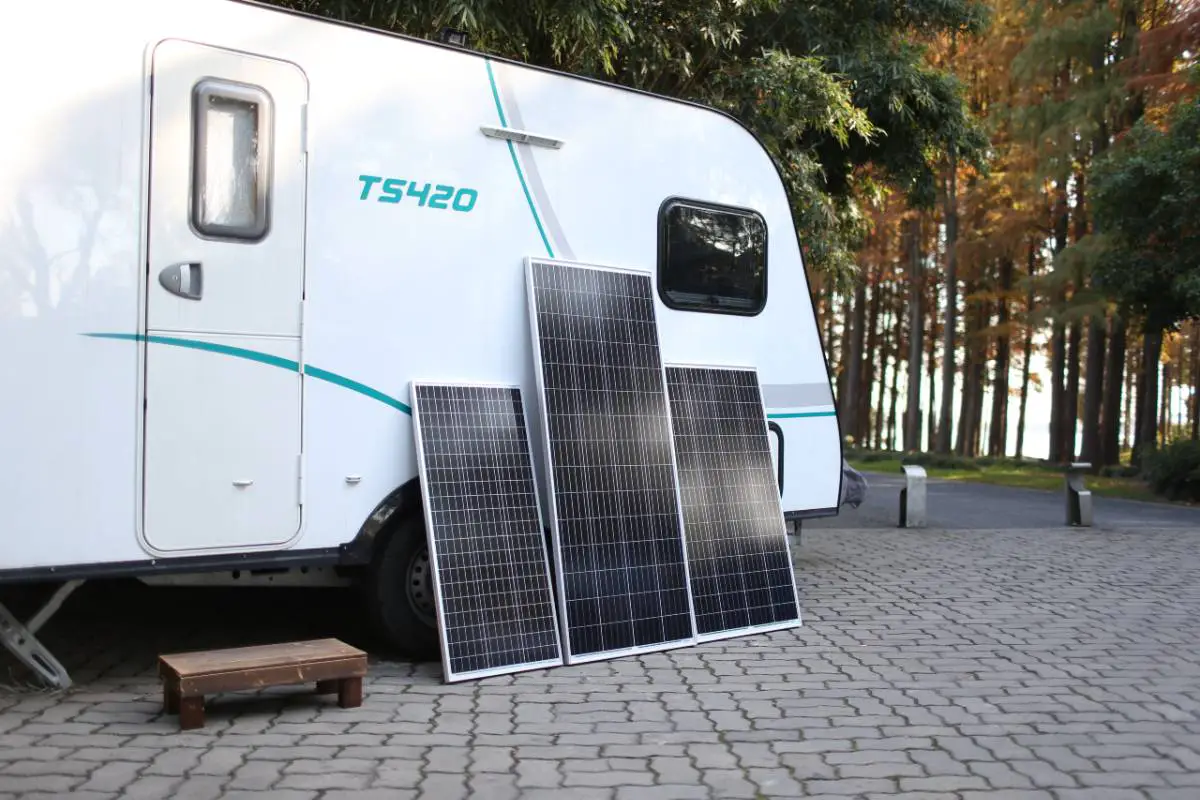
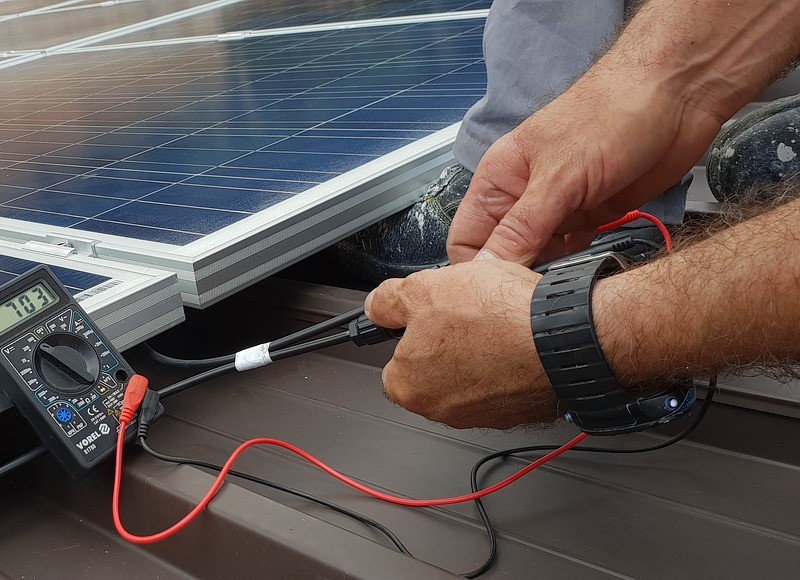
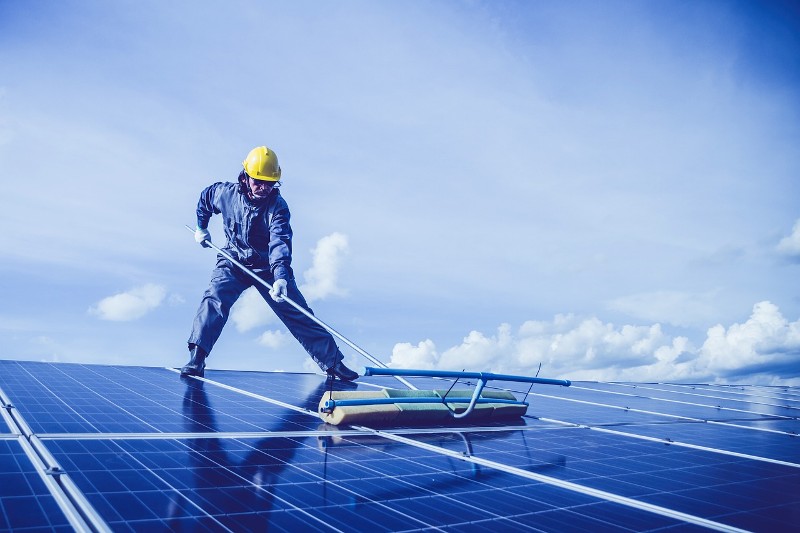
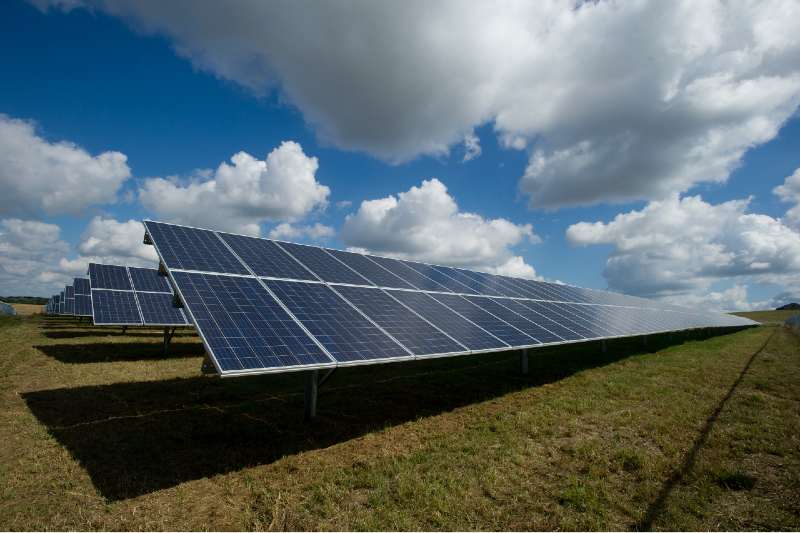
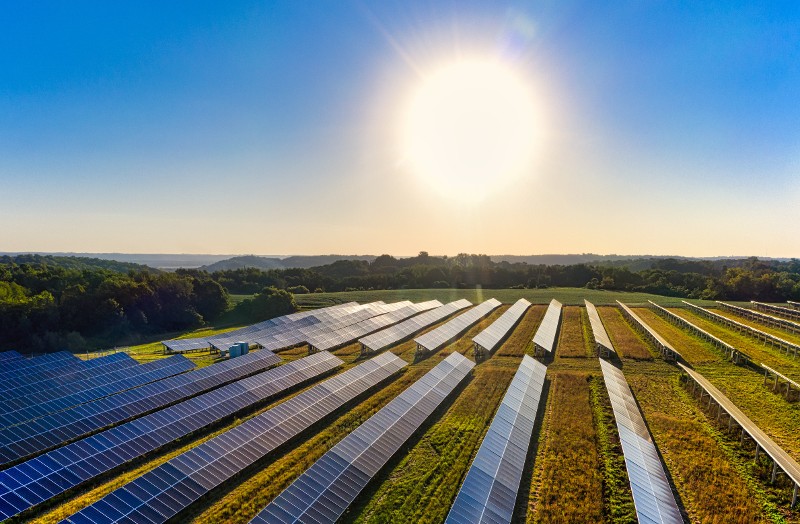
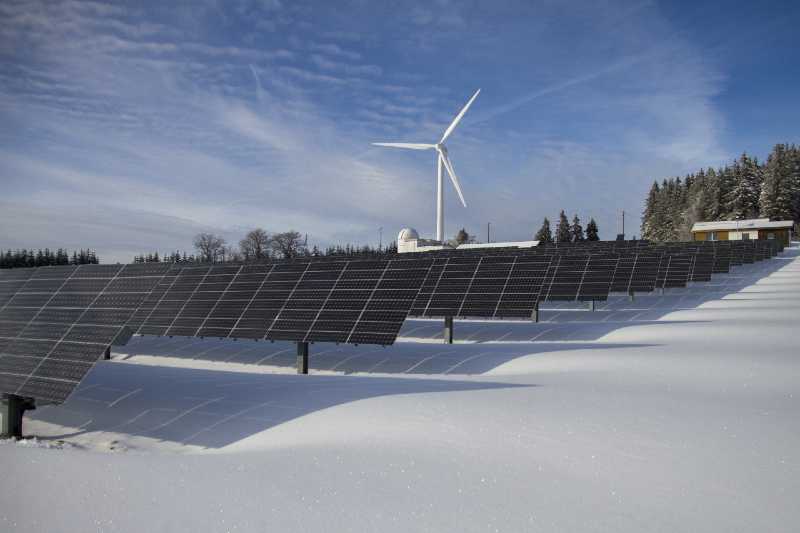
Since I installed solar panels on my home, I have had a tree struck by lightening. Plus my next door neighbor just had tree hit. Seems an odd coincidence. could the risk of a lightening strike be increasedd by the presence of solar panels?